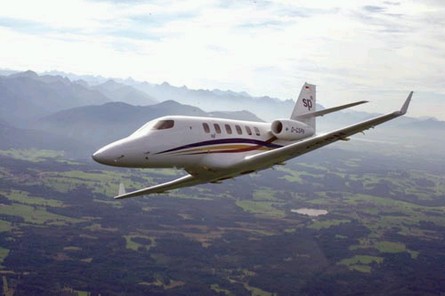The strength of the business aircraft market has spawned a new wave of independent start-ups, each hungry to carve a slice of this lucrative market and eager to avoid becoming another statistic in an industry littered with failures.
In the past 12 months US companies Adam Aircraft and Aviation Technology became the latest victims. While Adam has now found a buyer in AAI Acquisition, which plans to inject new life and much-needed investment in the A700 twin-engined very light jet, interested parties have yet to step in and save the ATG Javelin personal jet.
Despite the low odds, independents continue to work aggressively in an effort to bring their new designs to market in the next couple of years.
Honda says it is on track to certificate and deliver in 2010 its twin-engined HondaJet advanced light jet, launched two years ago as Honda's first foray into the business jet arena. The HondaJet has attracted more than 100 orders worth around $360 million, and the company is set to embark on a European sales launch, following huge demand from potential customers across the continent.
 |
|---|
© HondaJet |
The aircraft, designed to cruise at around 420kt (780km/h) and seat up to eight people, is to be powered by the GE Honda HF120 turbofan, for which preliminary testing has begun. The HF120 engine was formally launched in late 2006, when it was selected to power the HondaJet and the Spectrum Aeronautical S-40 Freedom mid-size business jet, which is also earmarked for certification in 2010, a year behind its original schedule due to the 2005 fatal crash of the first prototype.
The Spanish Fork, Utah-based company is planning to restart flight testing with the first production conforming aircraft early next year, "which will be as close to the production model as possible without the interior", says Spectrum president Austin Blue. The $6.8 million S-40 will compete with aircraft such as the Bombardier Learjet 60XR and Gulfstream G150. Approval of the smaller $3.95 million S-33 light jet stablemate is set for about 12 months later.
"We have a very strong orderbook for both aircraft," says Blue, "evenly split between fleet and private customers." He adds: "There is no rush to market both aircraft until after the first flight as production is already sold out for several years."
Germany's Grob Aerospace is pursuing an aggressive certification schedule for its all-composite SPn light jet, which is earmarked for certification in the fourth quarter. Around 500h of flight testing have been chalked up so far - half the target set by the Swiss-owned manufacturer - and the fourth prototype is about to join the programme.
 |
|---|
© Grob |
The first two series examples are at early stages of production at Grob's Tussenhausen-Mattsies factory in Germany. These two aircraft, which will be sold and leased back by Grob as customer demonstrators, will also join the later stages of the test programme. Grob has secured around 100 orders to date for the SPn and plans to follow its certification by developing a stretched version with a 2.2-3m (7.3-10ft) fuselage plug, adding as many as four seats to the six- to eight-seat cabin.
Source: Flight International
















